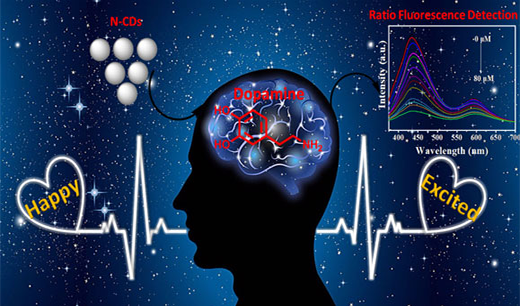| May 28, 2021 |
Novel nitrogen-doped dual-emission carbon dots as an effective fluorescent probe for ratiometric detection dopamine
(Nanowerk News) How to construct the dual emission nitrogen-doped carbon dots (CDs) by a simple method? Professor Lili Ren with her collaborators proposed a new strategy to prepare such materials which were used to the detection of dopamine (NANO, "A Novel Nitrogen-Doped Dual-Emission Carbon Dots as an Effective Fluorescent Probe for Ratiometric Detection Dopamine").
|
 |
| A schematic illustration of Synthesis of nitrogen-doped double-emission carbon dots and ratio fluorescence detection for dopamine, which acts as a neurotransmitter to regulate various physiological functions of the central nervous system. (© World Scientific)
|
|
The traditional ratiometric fluorescence (FL) probe usually needs to combine different nanomaterials by chemical or physical methods and the manufacturing process is more complicated. While the dual-emission carbon dots (DECDs) can simplify the detection process.
|
|
Therefore, it is of great significance to design a simple ratiometric fluorescence probe based on the DECDs for the accurate determination of DA concentration.
|
|
Here, a new kind of dual-emission N-doped carbon dots (N-CDs) was prepared by one-pot hydrothermal method with p-phenylenediamineas as carbon source and triethylamine as nitrogen dopant. The synthesized N-CDs show FL emission at 435 nm and 595 nm under 360 nm excitation wavelength.
|
|
The N-CDs can be used as a ratiometric fluorescence probe for highly selective detection of DA. This is the first time to report the dual-emission fluorescence carbon dots to detect DA.
|
|
This work not only develops a new method for preparing dual emission nitrogen-doped carbon dots, but also exploits an economic, environmentally friendly, sensitive and specific DA detection method.
|

